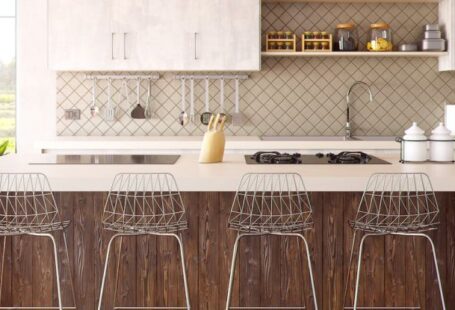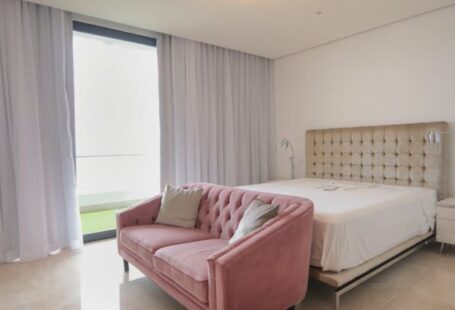In the realm of interior design, creating depth in a small living space can be a game-changer. Textured walls have emerged as a popular tool for achieving this goal, offering a versatile and visually appealing way to add character and dimension to a room. Whether you’re looking to make a cramped area appear more spacious or simply want to inject some personality into your home, textured walls can be the perfect solution. Let’s explore how these tactile surfaces can transform a small living space and elevate its overall aesthetic appeal.
**Enhancing Visual Interest**
One of the key advantages of incorporating textured walls into a small living space is their ability to enhance visual interest. Smooth, flat walls can often appear bland and uninspiring, particularly in a confined area where every detail counts. By introducing textures such as brick, stone, wood, or even decorative plaster, you can instantly elevate the look and feel of the room. These textured surfaces catch the light in unique ways, creating depth and shadow that add a dynamic element to the space.
**Creating a Sense of Depth**
Textured walls are excellent at creating the illusion of depth in a small living space. By playing with different textures and finishes, you can make the walls appear further away than they actually are, giving the room a more open and airy feel. This effect is especially beneficial in rooms with low ceilings or limited natural light, as it helps to counteract the sense of confinement and make the space feel more expansive.
**Adding Warmth and Texture**
Incorporating textured walls into a small living space can also help to add warmth and texture to the room. Whether you opt for a rough-hewn stone finish, a cozy wood paneling, or a sleek geometric pattern, textures have a tactile quality that can make a space feel more inviting and lived-in. In a small room where every design choice matters, the addition of textured walls can make a significant impact on the overall ambiance and comfort of the space.
**Playing with Light and Shadow**
Another benefit of textured walls is their ability to play with light and shadow in a room. The interplay of light on different textures can create striking visual effects, casting shadows that change throughout the day and adding a sense of movement and dimension to the space. By strategically placing lighting fixtures to highlight the textures, you can further enhance this effect and create a dynamic and visually engaging environment.
**Choosing the Right Texture**
When it comes to selecting the right texture for your small living space, consider the overall style and mood you want to achieve. Rough textures like exposed brick or stone can add a rustic and industrial feel, while smoother textures like decorative plaster or wallpaper can lend a more refined and elegant touch. Experiment with different options to find the texture that best complements your existing decor and enhances the aesthetic of the room.
**Embracing the Versatility**
One of the great things about textured walls is their versatility. Whether you want to create a focal point with a bold feature wall or add subtle texture throughout the room, there are endless possibilities to explore. From paint techniques and wallpaper to 3D panels and natural materials, the range of options available allows you to customize the look to suit your personal style and design preferences.
**A Final Touch**
In conclusion, textured walls offer a creative and effective way to add depth and dimension to a small living space. By incorporating different textures, playing with light and shadow, and embracing the versatility of textured surfaces, you can transform a cramped room into a visually captivating and inviting environment. Whether you’re aiming to make a design statement or simply want to enhance the overall ambiance of your home, textured walls are a powerful tool that can help you achieve your interior design goals.





